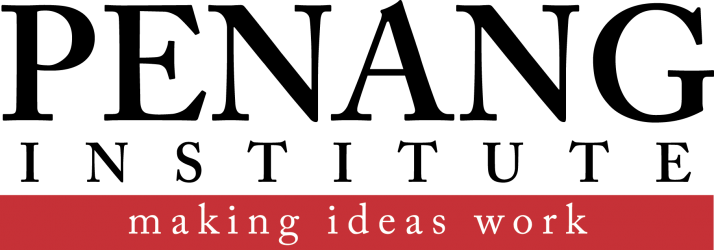Executive Summary
- Thirty four percent of SMEs in Malaysia have witnessed a decrease in sales of more than 20% so far during the Covid-19 pandemic. Many remain fragile and lack sufficient cash reserves to survive without government support.
- Worsened liquidity, lack of suitable talents, and difficulties in adopting technological solutions are SMEs’ key challenges during the pandemic.
- The situation is critical for many of them, and policy interventions need to mainly tackle short-term challenges, support short-term liquidity and availability of funding, and provide the right conditions and incentives for innovative businesses and potential entrepreneurs.
- Digital transformation is key to surviving the current crisis – and future ones. Continued support for SME efforts to innovate, improve connectivity and digitisation processes, and expand into new markets, is crucial to the country’s economy building back better.
1. Introduction
Small and medium-sized enterprises (SMEs) have always been the lifeblood of the Malaysian economy. As of 2019, they contributed 38.9% of the country’s gross domestic product (GDP), and 48.4% of national employment (Department of Statistics Malaysia, 2020).
Important as they are, SMEs are financially more fragile than larger firms – they own fewer assets and cash reserves, and score lower on productivity levels. As a result, the impact of the Covid-19 pandemic on them has been immense. According to the latest survey by the Small and Medium Enterprises Association (SAMENTA), 34% of SMEs experienced a significant decrease in sales of more than 20% in 2020, compared to 2019.
The majority (89%) anticipate that their businesses will turnaround only in the third quarter of the year or later. For most, the return to business normalcy hinges primarily on Malaysia’s vaccination programme – in particular, its speed, effectiveness, and coverage. The immunisation programme will begin on 26 February, and roughly 80% of the population is expected to receive the vaccination by February next year. According to Malaysia’s schedule, about 30% of the population, or 9.4 million, will be inoculated by August 2021 (Carvalho & Timbuong, 2021). This, as well as the recovery of foreign trade partners as they roll out their own vaccination programmes, is expected to improve business activity.
But it is still unclear if a 30% immunisation rate is sufficient to bring a serious turnaround in business activity. There is also additional ambiguity coming from the arrival of new Covid-19 strains that have shown themselves to be more infectious or resistant to particular vaccines (Wadman, 2021).
This year, Malaysian SMEs continue to be caught in a situation fraught with risks and challenges. SMEs are cautious about their outlook for 2021, with 21% expecting poor business performance and 25% feeling optimistic. 30% are unsure if they will see retrenchments.
But there are silver linings. The signing of a new regional trade agreement and favourable financing options point towards opportunities for those who are able to pivot.
2. The hurdles
Challenges expected for the year are a mix of familiar ones and of new ones, some of which reinforce each other. Talent supply remains a pressing concern, as does cash flow. SMEs face higher operating costs, a consequence of higher fuel prices and complications from the pandemic. Due to an acceleration in the shift to digital markets, market access issues have suddenly been brought to the forefront, compounded by talent and funding problems. Political instability continues to weigh heavy on the mind of business owners, too.
An acute lack of talent
Relatively poor access to talent and the lack of suitable talent itself are longstanding issues for SMEs, both of which impede innovation and digital adoption. Smaller firms also tend to lack funding and the resources needed to upskill or reskill their workers (SME Corp Malaysia & Huawei, 2018).
The rise of the gig economy has increased labour market flexibility and acts as a counterweight to cyclical unemployment. Yet, the temporary relief it provides may eventually create long lasting issues down the road. As a result of rising demand for technological skills, workers could find their skillsets obsolete or irrelevant once they leave gig work, if they do not reskill or continually practise their skills.
Lower cash-flow
For many SMEs, cash-flow is being decimated from two ends. On the one hand, it is the decline in sales revenue, and on the other, higher operating costs. Although cash positions are supported by government soft loans in the short run, SMEs cannot stay afloat unless demand picks up. As of January 2021, 45% of SMEs have adequate cash reserves for only two more months or less. Slightly more than 20% are more optimistic and see their cash reserves lasting four to five more months.
- Decrease in sales and poor market access
A plunge in sales revenue due to overall weaker demand from domestic markets, and to a certain extent, foreign markets, have weakened SMEs’ cash reserves. As mentioned earlier, 34% of SMEs saw sales in 2020 decline by more than 20% compared to 2019. The economic slowdown also leads to customers delaying payments, and this aggravates cash flow problems further.Moreover, one challenge created by the sudden change from physical to digital storefronts is that SMEs without an online presence suddenly find themselves cut off from markets, and see sagging sales as a result. Estimates from 2018 suggest that this could have impacted up to 56% of Malaysian SMEs when the pandemic first struck (SME Corp Malaysia & Huawei, 2018), though this figure will shrink going forward as more get involved in e-commerce. - Higher operating costs
Since the commodity’s crash in March 2020, oil prices have steadily climbed upwards, sustained by greater demand in China and production cuts by the Organization of Petroleum Exporting Countries and partner countries (OPEC+) (Meredith, 2020). The ringgit also depreciated against major currencies in 2020 (FocusM, 2020), due to improvements in China’s economic activity and heightened global risks driving investors to safe haven assets.Notwithstanding recent stricter lockdowns that have delayed shipping, both of these factors have driven up the costs for logistics and raw materials for SMEs, especially manufacturers.[1] The Producer Price Index (PPI) for crude materials in Malaysia rose by 7.6% and 6.3% in November and December 2020 (month-on-month). For intermediate supplies and materials, it was 1.0% and 1.3% respectively (Department of Statistics Malaysia, 2021).
Adoption of technological solutions
Consumers’ shift to virtual marketplaces does not merely affect market access, it also impacts SMEs’ ability to stay competitive. Labour productivity of SMEs is only 67.8% of non-SMEs’. While the gap in digitisation does not fully account for that disparity, it does play a significant role. Without a digital presence and the tools for data analytics, business owners lack visibility into changing consumer patterns. It then becomes a struggle to engage customers, and to adapt business offerings appropriately.
Due to their size, SMEs lack funds and the know-how needed to adopt technological tools. Despite governmental initiatives to boost digitisation, only 25% of businesses in Malaysia have accelerated their digital transformation plans, and 60% have in fact slowed down (BusinessToday, 2020). Substantial support and case-by-case mentoring is likely to be needed going forward if SMEs are to successfully implement more complex technological solutions in their businesses.
Political instability and governance
The political risks that have surfaced early last year present yet another threat to Malaysian SMEs. After a brief but significant improvement in 2019, Malaysia’s World Bank governance score dipped in 2020 following profound political uncertainty. In a time when the ASEAN region is engaged in fierce competition to attract foreign investment, unstable politics in Malaysia can only serve to deter or delay investment inflows, to the detriment of its SMEs. Prospects for improved governance in the future appear dim as well (Fitch Ratings, 2020).
3. Opportunities
Times of crisis may bring tough challenges, but they also present new opportunities for SMEs and entrepreneurs. Many successful innovative businesses have emerged from periods of crisis. For instance, Dropbox, Uber, Airbnb, WhatsApp, Groupon, and Alibaba’s Taobao were all founded during or just after the global financial crisis and the SARS outbreak. In other words, crises are often times of heightened restructuring which may eventually result in a stronger and more resilient economy.
The significant economic disruption caused by Covid-19 and the negative effects discussed in the previous section may be mitigated by government support, digital economy transformation and regional partnerships.
Digital economy transformation
The Covid-19 pandemic is forcing businesses – from retail, manufacturing and service providers – to re-evaluate and restructure their business models, as some of them may not be relevant going forward with the digital economy. The crisis presents an opportunity for SMEs to build or accelerate their digital business strategies. The Covid-19 pandemic is pushing more consumers online and accelerating the adoption of e-commerce which would require further digital adaptation by SMEs. By going digital, SMEs will be able to strengthen relationships with existing customers, as well as build more trust through mutual support while exploring and leveraging new partnerships. Although the immediate benefits of digital interventions may differ between sectors and firms, adoption of digital technologies such as the Internet of Things (IoT), Artificial Intelligence (AI), E-payments, E-commerce and data analytics can help SMEs in areas such as streamlining internal processes, cutting costs, managing transactions, delivering goods efficiently, facilitating access to financial services, enhancing profitability and engaging with new and existing customers.
It has been proven that digitisation and digital tools can benefit SMEs greatly. For instance, a study by SME Corp. Malaysia and Huawei Malaysia found that the application of advanced digital technologies such as data management solutions can enhance SME productivity by up to 60%. Furthermore, SMEs that use social media have experienced a 26% increase in productivity while those engaged in e-commerce have seen productivity increase by 27% (SME Corp Malaysia & Huawei, 2018). On this front, the government has been supportive, providing grants such as the PENJANA Smart Automation Grant and SME Digitalisation Grant. Bank Negara Malaysia has also recently set up an RM 1 billion facility to support innovation in high-tech SMEs (SME & Entrepreneurship Magazine, 2020).
As SMEs are part of the digital economy ecosystem, transformation and innovation in digital skills are required so that business sustainability can take place now and in the future. Moreover, government support and policy interventions can facilitate this process and help firms overcome hurdles on their digitalisation journey.
Financing support programmes
Targeted financial support has been introduced and implemented to mitigate the impact of the Covid-19 pandemic on SMEs. These supports include tax relief, employment–related measures (e.g. wage subsidies, reduction of the foreign worker levy, etc.), and economic stimulus measures (e.g. moratorium on loans, abolition of the 2% interest rate for the RM500 million Micro Credit Scheme, easy financing scheme, etc.) among others. These are mainly to support liquidity in the system. Credit guarantees may lower finance or borrowing costs which are expected to stimulate investments. In addition, the government has also used structural support measures for digitalisation, innovation and reskilling to enhance SME resilience and recovery.
Regional market access
During the pandemic, it is important to strengthen the integration of local companies into the global value and supply chain for them to become more competitive on the international stage. Since 1993, Malaysia has signed 16 Free Trade Agreements (FTAs) and implemented 14 FTAs (7 bilateral and 7 regional FTAs). The Regional Comprehensive Economic Partnership (RCEP)[2], the world’s largest trading bloc comprising about 40% of world trade, was signed in November 2020, to be implemented in January 2022. Like all FTAs, RCEP offers its members a consolidated market with streamlined rules of origin which will lead to expansion of trade and investments among the participating countries, and strengthen regional value chain activities. It would open up wider market access, especially for local SMEs, through the removal and reduction of tariffs and non-tariffs, harmonisation of technical standards and regulations, as well as economic cooperation.
4. Policy responses to foster SME resilience
Policy interventions should mainly aim at tackling short-term challenges, supporting short-term liquidity and availability of funding, and providing the right conditions and incentives for innovative businesses and potential entrepreneurs. These will speed up the recovery and preserve aggregate employment in the long term. To help Malaysia’s SMEs build back stronger and with more resilience, the government has a significant role to play by supporting SMEs’ efforts to innovate, enhance connectivity and digitisation processes, and expand into new markets.
Support short-term financial needs
The provision of enough liquidity in the financial system is a key policy. Banks are recommended to continue supporting SMEs that suffer cash-flow problems caused by irregular business conditions, and to ensure that otherwise-solvent firms do not go bankrupt as a result of containment measures.
Although the current credit grants are designed to be short-term and to provide emergency liquidity, it is important to make sure that the duration of credit is extendable. Given the uncertainty surrounding the duration of Covid-19 and MCO, the government should therefore look into expanding and extending the short-term financial supports (e.g. Special Relief Facility (SRF), wage subsidy and smart automation grant), with minimal bureaucracy, and help secure jobs and incomes of SME workers.
Raise awareness about existing measures and initiatives
SMEs could be missing out on vital available financial support and not taking full advantage of them because of the lack of awareness. The SME survey by SAMENTA reveals that nearly half of respondents are uncertain of Budget 2021 and how they can benefit from it. This suggests that there is a need to raise awareness and improve understanding of existing measures. State and non-state actors can play a role by supporting initiatives that guide SMEs towards appropriate Covid-19 policies that they can benefit from (e.g. through official platforms that centralise information on support programmes, provide advice on cash-flow management and best practices for connecting with investors remotely, etc.).
More procurement from government
During this challenging time, SMEs’ main concerns are demand, liquidity, and revenues. The government, as a major buyer of goods and services, has the opportunity to support SMEs directly through their purchasing policies. This would, on the one hand, increase stability of demand and enhance SMEs’ cash-flow, and on the other hand, benefit the government by generating significant financial savings if managed well, while delivering high-quality locally-sourced goods and services to meet urgent demand.
Facilitating digital transformation
It is important to ensure that an affordable and high-quality digital infrastructure is developed. SME digitisation during Covid-19 requires government and stakeholders’ support. Public-private partnerships play a key role in facilitating digitisation and automation. Such partnerships might even reduce the cost of basic digital infrastructure. It is also essential that awareness of the benefits of digitisation be raised, especially among firms and sectors hit hard by the pandemic, such as food and beverage, retail and wholesale. Moreover, enhancing trust in digital solutions such as data protection and privacy, cybersecurity, and protection from digital fraud are essential. Failure to address these issues will adversely impact the trust that businesses and consumers place in digital solutions.
Boosting digital skills in SMEs
As mentioned earlier, finding suitable talent is one of the main challenges faced by SMEs. Hence, there is an urgent need to boost SMEs’ access to talent pools. Moreover, investing in skills and online training, especially during the crisis, would prevent skills depreciation and encourage upskilling or reskilling of SMEs’ workers which in turn could improve SME employee technical competencies and spur digitalisation from within SMEs. It is also important to promote university-business collaborations to facilitate industry applications of innovation and technologies.
For list of references, kindly download the document to view.
Editor: Ooi Kee Beng
Editorial Team: Sheryl Teoh, Alexander Fernandez, Tan Lii Inn and Nur Fitriah (Designer)
[1] Manufacturing SMEs tend to import a higher proportion of their inputs. According to SME Corp Malaysia (2019), SMEs in the semiconductor industry import up to 56.6% of their inputs, and those producing optical instruments and photographic equipment import 65.4% of their inputs.
[2] RCEP is an economic partnership arrangement involving the 10 nations of the ASEAN, Australia, Japan, New Zealand, South Korea, and China.
You might also like:
![Reclaiming Penang’s Historical Role as a Prominent Literary Translation Hub]()
Reclaiming Penang’s Historical Role as a Prominent Literary Translation Hub
![Key Measures Identified for Strengthening STEM Interest among Students in Penang]()
Key Measures Identified for Strengthening STEM Interest among Students in Penang
![Economic Success Requires Foresighted Demographic Measures]()
Economic Success Requires Foresighted Demographic Measures
![From Means of Survival to Tourism Gems: A Study of Street Food Prospects in Penang]()
From Means of Survival to Tourism Gems: A Study of Street Food Prospects in Penang
![Podcasts: Challenges and Opportunities for Media Practitioners, Policymakers and Individuals]()
Podcasts: Challenges and Opportunities for Media Practitioners, Policymakers and Individuals







